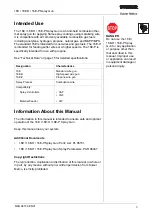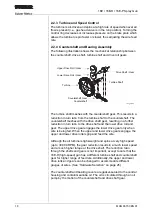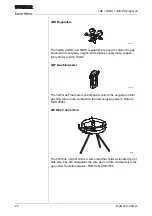
16E / 16E-H / 16E-P Spray Gun
12
MAN 96150 EN 01
Compressed Gases
Local, state and federal regulations relative to in-building use and stor-
age of gas cylinders should always be observed. The improper stor-
age, handling or use of gas cylinders can result in a serious safety
hazard. For additional information refer to NFPA 50, 50A, 51, 54, and
55 or other applicable local codes.
Oil or grease should never come into contact, or be used on, equip-
ment which carries oxygen gas. Only approved lubricants should be
used in these cases.
The manifolding of more than two gas tanks may be required to permit
higher gas flows and longer spray times. Only approved pressure
adjusting regulators should be used with each gas, and should never
be over tightened or forced to make a connection. Gas regulator
adjusting screws should be fully released prior to opening cylinder
valves. Cylinder valves should be opened slowly to prevent surges
that can damage other related equipment. When opening a gas cylin-
der, stand to the side of the pressure-reducing regulator, never in front
of it.
It is dangerous and not recommended to use acetylene gas above
1.03 bar (15 psig). Consult the local country regulations for maximum
allowable acetylene pressures.
The following guidelines should be followed when handling gas tanks:
1
Never drop tanks or knock tanks into one another. Some gases are
unstable (e.g., acetylene) even when in the tanks.
2
Gas tanks should always be secured to a wall or other supporting
fixture with chains or similar restraints even when the tanks are not
in use as they can easily tip over.
3
Only transport tanks in proper carriers. Gas carts are designed to
move tanks around, dollies are NOT. Do not attempt to carry or
drag tanks
4
Never leave tanks in direct sunlight or extreme heat. Heat will
cause the tank pressure to increase dramatically resulting in an
unsafe situation.
5
Never smoke around tanks. Although no leak may be apparent,
some gas could be leaking and may ignite.
6
Tanks should always remain upright. They are designed to be
operated and transported in this position. If a tank is found lying on
its side, carefully return the tank to its upright position. Allow the
tank to remain upright for at least 30 minutes before attempting to
use it.
DANGER
Combustible gases
present under pressure.













































